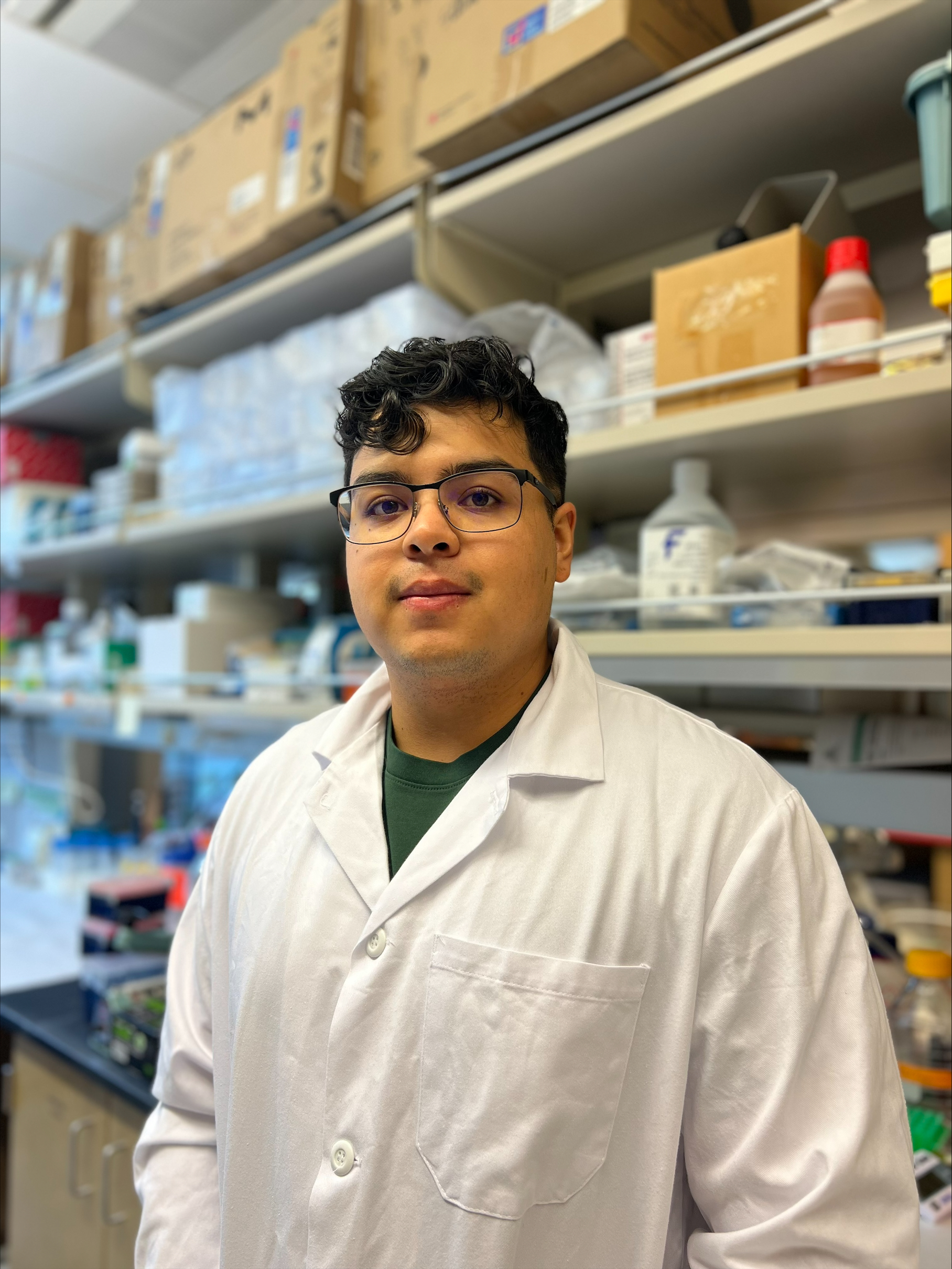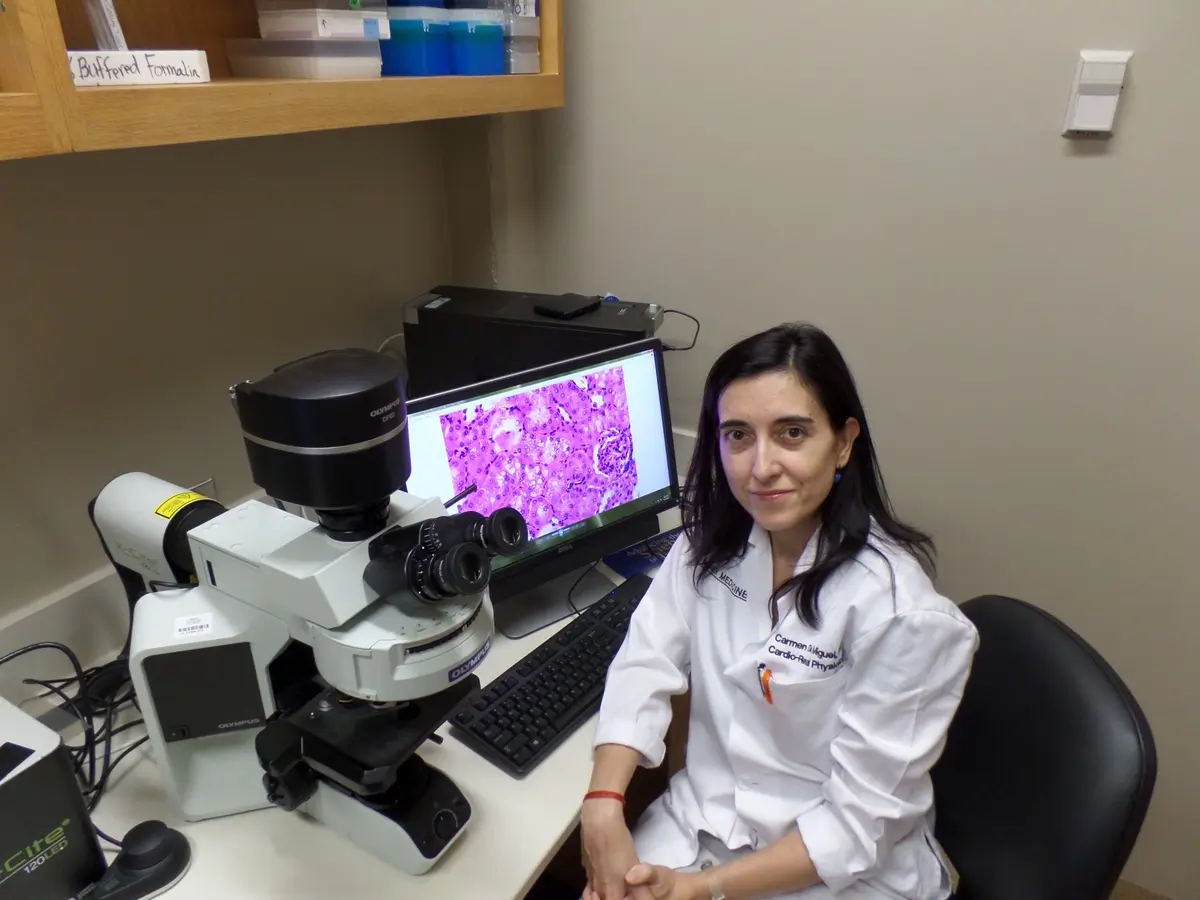Due to the generous donation of a donor, this project is now fully funded.
Final Project Update
As mentioned in the previous project update, for mouse studies, we now have a predicted >90% congenic mice, which means that they are almost ready for the experiments. With respect to human cells, we previously obtained initial evidence of the role of polyamines in contributing to endoplasmic reticulum (ER) stress in human islets. After that, we delved deeper into the different arms of the unfolded protein response (UPR) and identified the IRE1a pathway to be the potential mechanistic pathway that gets regulated by the polyamines in conditions of ER stress. We confirmed the activation of this pathway at both RNA (transcriptional) as well as protein (translational) levels. For an unbiased comprehensive analysis of the role of polyamines in islets, we performed RNA-seq analysis of human islets treated with cytokines +/- DFMO. RNA-seq followed by pathway analysis revealed that the presence of DFMO led to a significant alteration in processes associated with downstream effects of ER stress including activation of the ER-phagosome pathway, proteasomal degradation, and antigen-cross presentation.
This project has paved the path for interesting future studies, including performing the complex proteomics and metabolomics analysis for which the human islets samples have been submitted to the sequencing core. These multi-omics experiments will further enhance the knowledge of the complex networks that polyamines influence in the setting of stress and inflammation. In addition, the transgenic mice which we generated will dissect the specific physiological role of ODC in the β cell in the context of autoimmune diabetes. Collectively, these findings and future studies will help us understand the precise role and mechanisms of the polyamines in regulating stress responses in the islets β cells.
We express our deepest gratitude and sincerely thank the generous donors and the Diabetes Research Connection staff who trusted us and supported this project. Our project has already led to several novel research findings. Our long-term goal is to identify novel therapeutic targets for the prevention and a potential cure of type 1 diabetes.
6-Month Project Update
I am studying the role of compounds known as polyamines in type 1 diabetes (T1D) development using two model systems – mice and human cells. My focus is on the enzyme that promotes the generation of polyamines, ornithine decarboxylase (ODC). We hypothesize that the accumulation of polyamines in insulin-producing pancreatic islet β cells promotes stress on an organelle called the endoplasmic reticulum (ER) and that subsequently makes the β cells susceptible to immune cell attack.
For testing our hypothesis, we have started generating the mice in which the enzyme ODC is genetically deleted specifically in the β cells on a NOD mouse background that develops spontaneous T1D. Currently, they are in the process of breeding and have reached 78% congenicity; which means that within 2 generations of breeding they will be more than 99% congenic and ready for the experiments. Once ready, we will monitor these mice for diabetes incidence, immune cell attack, as well as β-cell health.
With respect to the experiments in the human cells, I have been performing studies with human islets. We observe that when human islets are treated with pro-inflammatory proteins called cytokines, it causes ER stress. Pro-inflammatory cytokine (PIC) treatment mimics the inflammatory environment seen in T1D pathology. However, when these human islets are treated with an inhibitor of ODC, DFMO along with the PIC, we see reduced levels of ER stress. This aligns with our hypothesis where inhibition of polyamines synthesis shows reduced ER stress. Next, we will incubate the stressed human islets with human immune cells and check whether inhibition of ODC prevents the activation of immune cells.
Project Description
Type 1 diabetes (T1D) is characterized by the destruction of the insulin-producing islet β-cells by the immune system, a feature that leads to elevated blood sugars. The lion’s share of research over the past several decades has focused on immune cells as the culprits for the disease progression. However, an emerging perspective suggests that β-cells exhibit features that alarm the immune cells, thereby initiating a cascade of events that lead to their demise. In this project, we will be studying a molecular process in β-cells that may provoke the immune cells.
Polyamines are a class of molecules produced by a cell and are responsible for the ability of a cell to stabilize DNA and proteins. Some of the proteins and DNA molecules affected by polyamines may contribute to provoking immune cells. Therefore, we feel that limiting the level of polyamines can have beneficial effects, including the suppression of immune responses. In this respect, it has been shown by other investigators that levels of certain polyamines are elevated in individuals with diabetes. This finding may suggest that these polyamines could contribute to the development of the disease. The initial production of polyamines is governed by a protein known as ornithine decarboxylase (ODC). In animal models of T1D, it has been shown that the levels of ODC are enhanced. These findings suggest the possibility that blocking the function of ODC could be a strategy to prevent T1D. Our lab has previously discovered that mice at risk for T1D demonstrate a delay in disease onset when administered a blocker of ODC known as difluoromethylornithine, or DFMO. These exciting findings necessitate a closer look at polyamines and how they might function in T1D.
In this project, we will investigate the role of polyamines by using genetically-altered mouse models as well as human islets to decipher the interplay between polyamines, β-cells, and the immune system. The specific goals of this study are:
- Determine the contribution of polyamine synthesis to the incidence of type 1 diabetes in mice.
- Determine the contribution of islet polyamine synthesis on immune cell activation
With the multi-disciplinary expertise of our lab in islet biology and immunology and by employing state-of-art technologies, this study will fill the critical gaps in the knowledge regarding the inciting events leading to T1D and open doors to potential therapeutics to prevent and/or delay the development of T1D.













